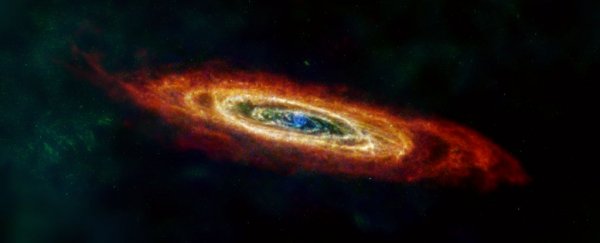
One per 100 years is not rare at all. The collapse mode must have the material contracting ahead of the developing event horizon. Is that even possible or even plausible?
All this makes for a universe of impossiblium.
Let us see. We observed a spent super star that just disappeared. And just how did we discover the Black hole? Do we buy any of this?
I think we may be choking on our data.
A Star Vanished And Was Mysteriously Replaced by a Black Hole
Space11 November 2024
ByEvan Gough, Universe Today
The Andromeda galaxy. (ESA, NASA, NASA-JPL, Caltech, Christopher Clark/STScI, R. Braun/SKA, C. Nieten/MPIfRA Matt Smith/Cardiff University)
Massive stars about eight times more massive than the Sun explode as supernovae at the end of their lives. The explosions, which leave behind a black hole or a neutron star, are so energetic they can outshine their host galaxies for months.
However, astronomers appear to have spotted a massive star that skipped the explosion and turned directly into a black hole.
Stars are balancing acts between the outward force of fusion and the inward force of their own gravity. When a massive star enters its last evolutionary stages, it begins to run out of hydrogen, and its fusion weakens.
The outward force from its fusion can no longer counteract the star's powerful gravity, and the star collapses in on itself. The result is a supernova explosion, a calamitous event that destroys the star and leaves behind a black hole or a neutron star.
However, it appears that sometimes these stars fail to explode as supernovae and instead turn directly into black holes.
New research shows how one massive, hydrogen-depleted supergiant star in the Andromeda galaxy (M31) failed to detonate as a supernova.
The research is "The disappearance of a massive star marking the birth of a black hole in M31." The lead author is Kishalay De, a postdoctoral scholar at the Kavli Institute for Astrophysics and Space Research at MIT.
These types of supernovae are called core-collapse supernovae, also known as Type II. They're relatively rare, with one occurring about every one hundred years in the Milky Way.
No comments:
Post a Comment